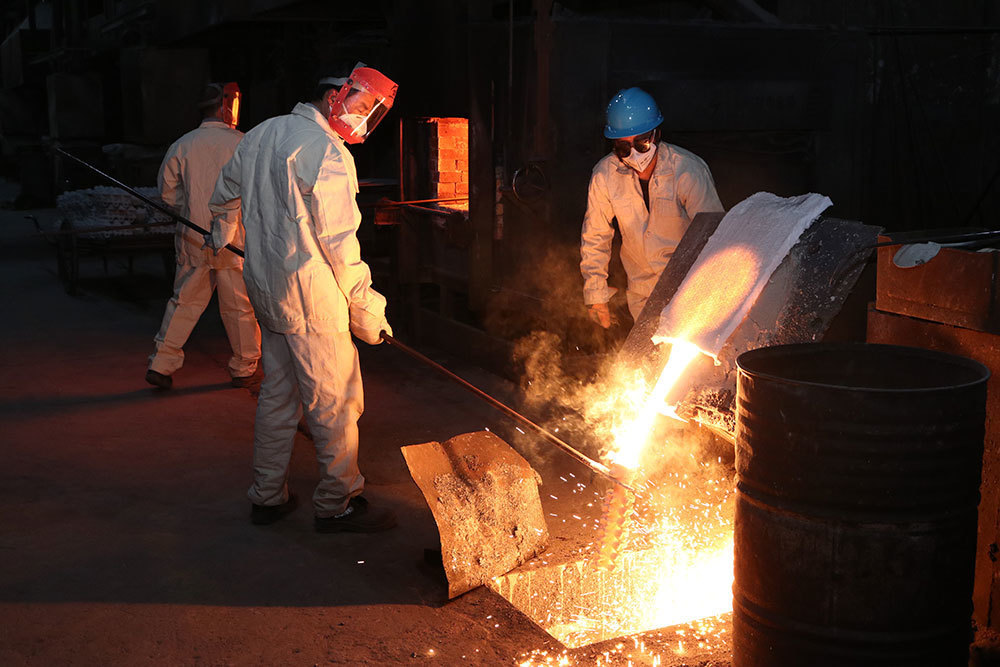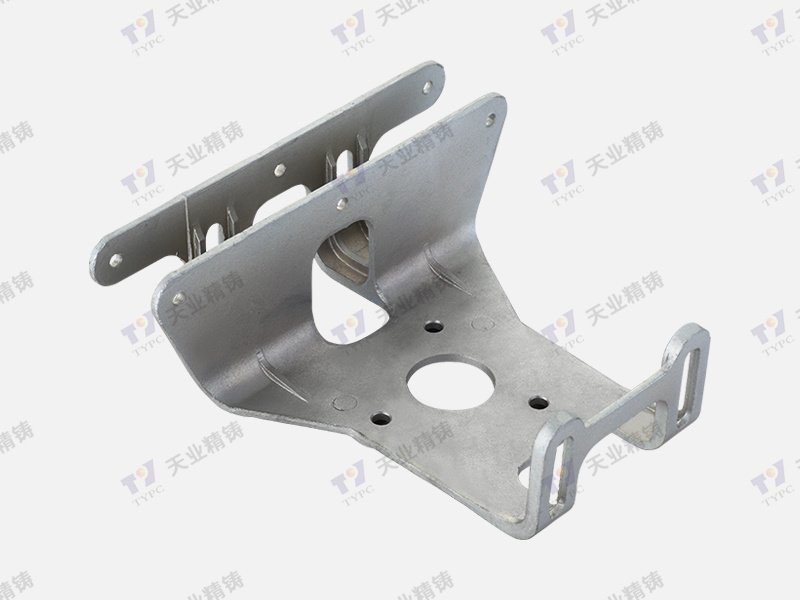2025-05-01
The Future of Industrial Components: Precision Investment Casting Insights
The Future of Industrial Components: Precision Investment Casting Insights
Table of Contents
- Introduction to Industrial Components
- Understanding Investment Casting
- Benefits of Precision Investment Casting
- Applications of Industrial Components
- Future Trends in Industrial Manufacturing
- Challenges Facing the Industry
- Sustainability in Investment Casting Processes
- Conclusion
- Frequently Asked Questions
Introduction to Industrial Components
In the industrial sector, components play a crucial role in ensuring machinery and systems function efficiently. The demand for **high-quality and reliable components** continues to rise, driven by rapid technological advancements and increased automation. As industries evolve, the need for precision and efficiency in component manufacturing becomes more pronounced. This article delves into the world of **precision investment casting**, examining its significance, benefits, applications, and future trends that are shaping the industrial landscape.
Understanding Investment Casting
**Investment casting**, also known as lost-wax casting, is a manufacturing process that allows for the production of intricate and precise metal components. This method involves creating a wax pattern that is then coated in a ceramic shell. Once the shell hardens, the wax is melted away, leaving a cavity that can be filled with molten metal. Investment casting is particularly beneficial for producing components with complex geometries and high dimensional tolerances.
The process can be broken down into several stages:
1. Pattern Creation
The initial step involves creating a detailed wax pattern, which is an exact replica of the intended component. Advanced technologies, including 3D printing, are increasingly used to enhance the precision of these patterns.
2. Shell Building
The wax pattern is coated with a ceramic material to form the shell. This shell must withstand high temperatures, making the choice of materials vital for quality.
3. Wax Removal
Once the shell is hardened, the wax is removed through a heating process, leaving behind a hollow ceramic shell.
4. Metal Pouring
Molten metal is poured into the shell to create the final component. This stage requires precise temperature control to ensure the metal fills the cavity completely without defects.
5. Shell Removal and Finishing
Finally, the ceramic shell is broken away, revealing the metal component, which is then subjected to finishing processes to achieve the desired surface quality.
Benefits of Precision Investment Casting
The precision investment casting process offers numerous advantages that make it a preferred choice for manufacturing industrial components:
1. High Precision and Accuracy
Investment casting allows for tight tolerances and intricate designs, making it suitable for applications where precision is paramount. This accuracy reduces the need for extensive machining post-production, saving time and resources.
2. Material Versatility
A wide range of materials can be used in investment casting, including stainless steel, aluminum, brass, and various alloys. This versatility enables manufacturers to select the most appropriate material based on performance requirements.
3. Reduced Waste
The investment casting process is inherently efficient, minimizing the amount of waste produced compared to traditional methods. The ability to recycle materials further enhances sustainability.
4. Cost-Effectiveness
Although the initial setup for investment casting can be high, the long-term savings through reduced machining, material waste, and labor costs make it economically advantageous for many manufacturers.
5. Enhanced Strength and Durability
Components produced through investment casting often exhibit superior mechanical properties, including strength and durability, owing to the controlled cooling and solidification processes involved.
Applications of Industrial Components
Precision investment casting is widely used across various industries, thanks to its adaptability and performance advantages. Some prominent applications include:
1. Aerospace Components
In the aerospace industry, where safety and precision are critical, investment casting plays a vital role in producing components such as turbine blades, structural components, and fasteners. The ability to withstand extreme conditions makes this method particularly suitable.
2. Automotive Parts
The automotive sector benefits from investment casting for parts like engine blocks, transmission housings, and suspension components. The strength-to-weight ratio achieved through this method enhances vehicle performance and efficiency.
3. Medical Devices
Investment casting is increasingly used in the manufacturing of medical devices, including surgical instruments and implants, where precision and biocompatibility are essential.
4. Industrial Machinery
Components for industrial machinery, such as pumps, valves, and gears, are often produced using investment casting due to the high tolerances and durability required for these applications.
5. Defense Equipment
In defense manufacturing, the reliability of components is non-negotiable. Investment casting ensures that parts used in weaponry and other defense equipment meet stringent performance standards.
Future Trends in Industrial Manufacturing
As technology continues to advance, several trends are emerging in the realm of industrial manufacturing, specifically regarding precision investment casting:
1. Integration of Industry 4.0
The shift towards **Industry 4.0**, characterized by the Internet of Things (IoT), big data, and automation, is revolutionizing manufacturing processes. Investment casting companies are increasingly adopting smart technologies to optimize production efficiency and quality control.
2. 3D Printing Enhancements
The use of **3D printing** for pattern creation is becoming more prevalent, allowing for faster prototyping and reduced lead times. This technology enhances design freedom and precision, ensuring that even the most complex components can be produced efficiently.
3. Advanced Materials Development
Research in materials science is leading to the development of new alloys and materials specifically tailored for investment casting. These advancements promise improved performance characteristics and expanded application possibilities.
4. Focus on Sustainability
With growing environmental concerns, the push for sustainable manufacturing practices is gaining traction. Investment casting processes are being refined to reduce energy consumption and maximize recycling efforts.
5. Globalization of Supply Chains
As industries strive for cost-effectiveness, the globalization of supply chains is becoming more common. This trend allows manufacturers to source materials and components from various regions, enhancing competitiveness and operational flexibility.
Challenges Facing the Industry
Despite its many advantages, the investment casting industry faces several challenges:
1. High Initial Costs
The setup costs associated with investment casting can be significant, particularly for new manufacturers. This factor can deter entry into the market, especially for smaller companies.
2. Skill Shortages
The technical nature of investment casting requires skilled labor. As industries evolve, there is a growing need for training and development programs to ensure that the workforce is equipped with the necessary skills.
3. Quality Control
Maintaining consistent quality across large production runs can be challenging. Implementing robust quality control measures is essential to minimize defects and ensure customer satisfaction.
4. Market Competition
As more manufacturers adopt investment casting, competition is intensifying. Companies must continuously innovate and optimize processes to maintain a competitive edge.
5. Regulatory Compliance
Various industries, particularly those related to aerospace and medical devices, are subject to stringent regulations. Navigating these compliance requirements can be complex and resource-intensive.
Sustainability in Investment Casting Processes
Sustainability is becoming a critical consideration in manufacturing, and investment casting is no exception. The industry is evolving to incorporate more eco-friendly practices:
1. Material Recycling
Investment casting allows for the recycling of metal scraps and defects, reducing waste and conserving resources. Companies are increasingly implementing recycling programs to maximize material utilization.
2. Energy Efficiency
Modern investment casting facilities are adopting energy-efficient technologies and practices to reduce their carbon footprint. This includes optimizing heating processes and utilizing renewable energy sources.
3. Eco-Friendly Materials
The development of bio-based and environmentally friendly materials for investment casting is on the rise. These materials can offer similar performance characteristics while minimizing environmental impact.
4. Waste Reduction Initiatives
Manufacturers are focusing on waste reduction initiatives throughout the casting process. By streamlining operations and implementing lean manufacturing principles, companies can minimize excess material usage and waste generation.
5. Lifecycle Analysis
Conducting lifecycle assessments of products has become essential for understanding their environmental impact. Investment casting companies are increasingly evaluating the sustainability of their processes and products to make informed decisions.
Conclusion
Precision investment casting is poised to play a pivotal role in the future of industrial components. With its ability to produce intricate designs with high precision, it caters to the evolving needs of various industries, including aerospace, automotive, and medical devices. As we move forward, the integration of advanced technologies, a focus on sustainability, and the development of new materials will shape the landscape of investment casting.
Organizations that adapt to these changes and leverage the benefits of precision investment casting will undoubtedly gain a competitive edge in the manufacturing sector, driving innovation and efficiency while meeting the demands of a rapidly changing market.
Frequently Asked Questions
1. What is precision investment casting?
Precision investment casting is a manufacturing process that allows for the production of intricate and precise metal components using a wax pattern and ceramic shell.
2. What are the main benefits of investment casting?
The main benefits include high precision, material versatility, reduced waste, cost-effectiveness, and enhanced strength and durability of components.
3. In which industries is investment casting commonly used?
Investment casting is widely used in industries such as aerospace, automotive, medical devices, industrial machinery, and defense equipment.
4. How does sustainability play a role in investment casting?
Sustainability in investment casting involves recycling materials, improving energy efficiency, using eco-friendly materials, and implementing waste reduction initiatives.
5. What challenges does the investment casting industry face?
Challenges include high initial costs, skill shortages, quality control, market competition, and navigating regulatory compliance.
This comprehensive exploration of precision investment casting provides insights into its significance and future in the industrial components sector. Through continuous innovation and adaptation, the industry is set to thrive amidst evolving challenges and opportunities.









